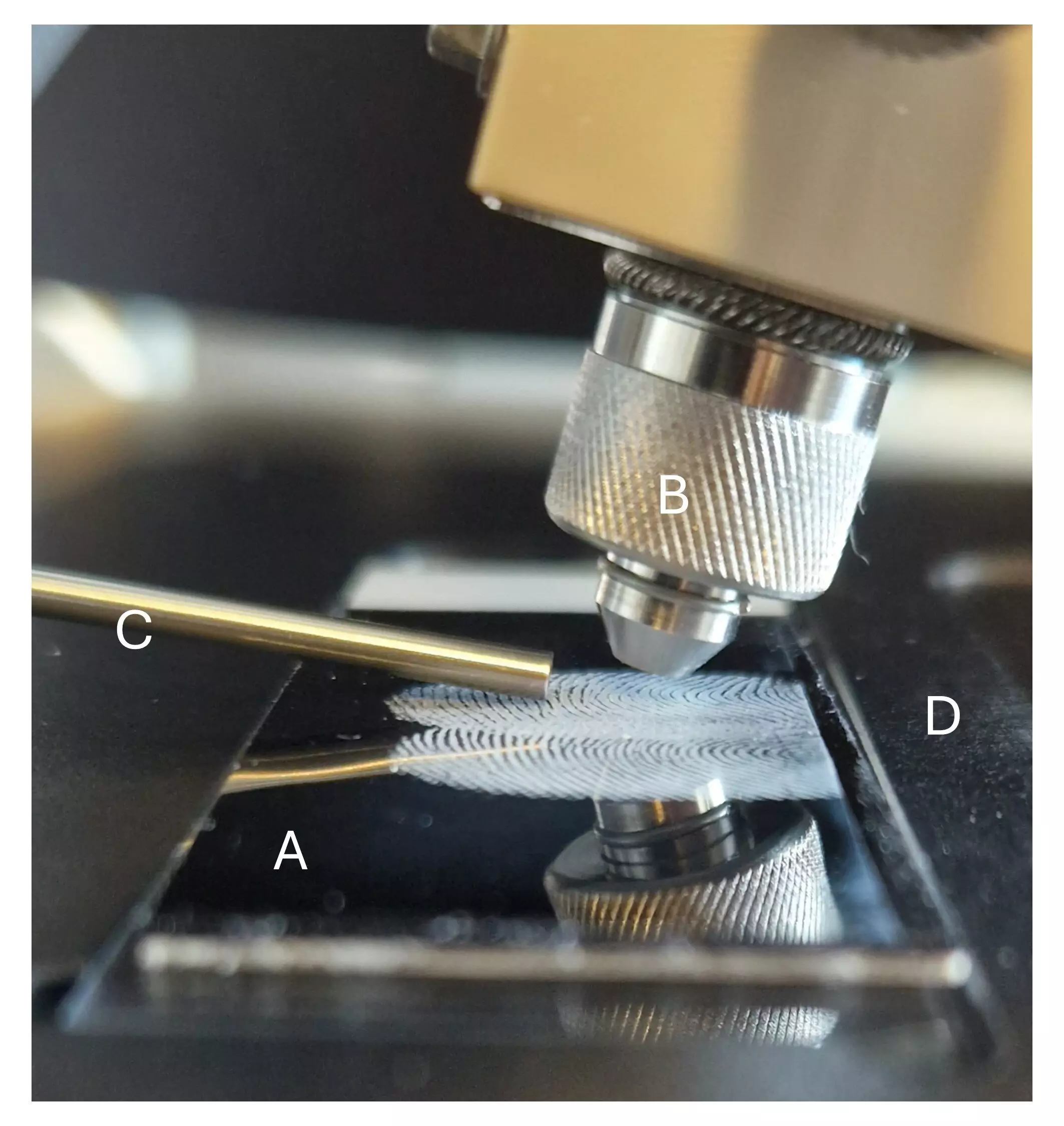In an exciting advancement for forensic science, researchers at Aarhus University’s Department of Forensic Medicine have made significant strides in fingerprint analysis using innovative chemical imaging techniques. This pioneering research holds the potential to enhance the efficacy of criminal investigations and stands out as the first of its kind to employ Desorption Electrospray Ionization Mass Spectrometry (DESI-MS) for analyzing fingerprints on gelatin lifters—an essential tool for collecting prints in delicate and irregular environments.
Forensic professionals often face challenges when collecting and analyzing fingerprints, particularly in complex crime scenes where prints may overlap or are faintly marked on surfaces. The conventional methods, primarily relying on standard photography, tend to fall short in differentiating overlapping prints or capturing subtle details that could provide critical evidence. In many instances, potentially valuable fingerprints are discarded simply because traditional techniques cannot adequately process them.
Danish police regularly utilize gelatin lifters to capture fingerprints from nuanced surfaces such as peeling paint or intricate handles. While these lifters offer advantages over traditional tape—primarily in their ease of use and adaptability to delicate items—temporary solutions have been inadequate in ensuring the full potential of the gathered prints is appreciated.
The researchers at Aarhus University’s Department of Forensic Medicine have posed a promising alternative through the application of DESI-MS. This innovative technique employs a spray of electrically charged methanol droplets to extract and ionize the substances within fingerprints. By measuring the mass of these chemical compounds, investigators can garner invaluable information that is otherwise obscured in traditional assessments.
Postdoc Kim Frisch emphasizes the transformative potential of this method, suggesting it could seamlessly integrate into existing police workflows. This study, recently published in the prestigious journal *Analytical Chemistry*, marks a shift in how law enforcement might address the complexities of fingerprint evidence. By advancing the capabilities of forensic science, this new approach aims to revive many otherwise discarded prints, allowing for a more thorough evaluation of evidence in criminal cases.
While the initial testing of this method has been confined to laboratory settings, researchers are eagerly transitioning to real-world applications. Collaborating with the National Special Crime Unit of the Danish Police, they are now analyzing fingerprints that have been collected at actual crime scenes. This partnership underscores the commitment to practical applications of their findings and the urgency in pushing for advancements in forensic methodology.
The implications of this research extend beyond merely identifying fingerprints. Each print reveals a wealth of information related to the individual who left it, including lipids, amino acids, and other chemical markers. Notably, prints can indicate exposure to various substances ranging from drugs to personal care items. The broader capacity for chemical profiling opens doors for investigators to draw correlations between fingerprints and lifestyle factors such as diet or substance use, thereby enhancing the narrative surrounding a case.
The potential outcomes of adopting chemical imaging techniques in forensic investigations are vast. Researchers like Frisch are optimistic that the DESI-MS method can be employed to unveil critical links to suspects or witnesses in serious crimes, such as murder or sexual assault. As investigators continue to refine these approaches, the information gleaned from fingerprints could significantly impact the pursuit of justice, allowing law enforcement agencies to draw more informed conclusions based on the physical evidence present at crime scenes.
In the realm of forensic analysis, the evolution of fingerprint analysis is merely the beginning. As ongoing research continues to explore the nuances of chemical signatures left behind on surfaces, the future of criminal investigations may become far more precise and detailed. The collaboration between academia and law enforcement is indicative of the necessity to ensure that scientific advancements translate into effective investigative practices.
Ultimately, as the researchers at Aarhus University push forward, they aim to solidify the reliability and efficacy of their methods within real-world settings. This endeavor not only reflects a commitment to scientific inquiry but also highlights the importance of adapting technological advancements to meet the challenges of contemporary forensic analysis. In making strides toward integrating chemical imaging into routine police work, it’s clear that the fingerprint may no longer be just a trace of identity; it could soon tell a much deeper story.


Leave a Reply